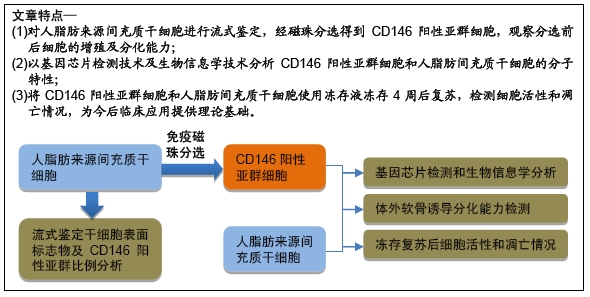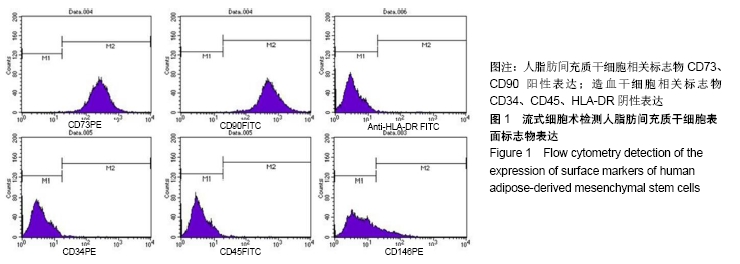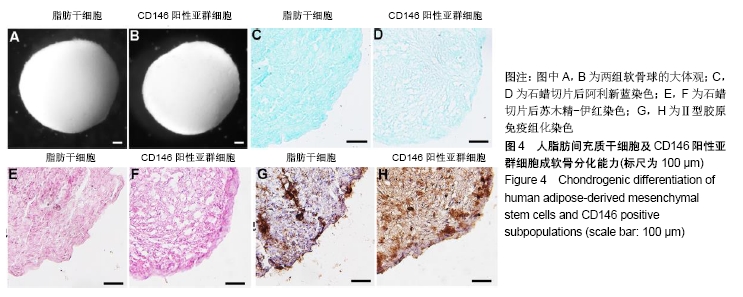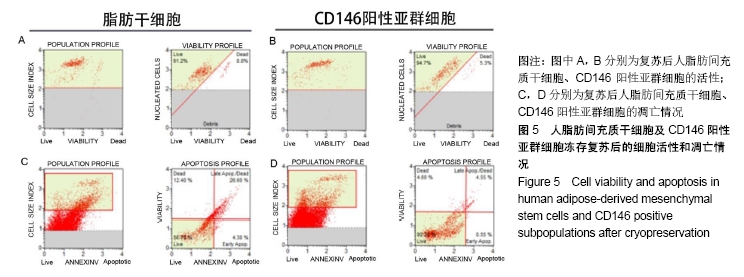[1] RAI V, DILISIO MF, DIETZ NE, et al. Recent strategies in cartilage repair: A systemic review of the scaffold development and tissue engineering. J Biomed Mater Res A. 2017;105(8):2343-2354.
[2] CASO F, COSTA L, DEL PUENTE A, et al. Clinical effects of mud-bath therapy and oral glucosamine sulfate after 6 months of discontinuation in patients with knee osteoarthritis: results from a randomised, controlled, crossover study. Clin Exp Rheumatol. 2017;35(1):169.
[3] PELUSO R, CASO F, COSTA L, et al. Mud-bath therapy and oral glucosamine sulfate in patients with knee osteoarthritis: a randomized, controlled, crossover study. Clin Exp Rheumatol. 2016;34(4):618-624.
[4] CHAHLA J, PIUZZI NS, MITCHELL JJ, et al. Intra-Articular Cellular Therapy for Osteoarthritis and Focal Cartilage Defects of the Knee: A Systematic Review of the Literature and Study Quality Analysis. J Bone Joint Surg Am. 2016; 98(18):1511-1521.
[5] CHOI S, KIM GM, MAENG YH, et al. Autologous Bone Marrow Cell Stimulation and Allogenic Chondrocyte Implantation for the Repair of Full-Thickness Articular Cartilage Defects in a Rabbit Model. Cartilage. 2018;9(4): 402-409.
[6] GAO L, GOEBEL LKH, ORTH P, et al. Subchondral drilling for articular cartilage repair: a systematic review of translational research. Dis Model Mech. 2018;11(6): dmm034280.
[7] ŻYLIŃSKA B, SILMANOWICZ P, SOBCZYŃSKA-RAK A, et al. Treatment of Articular Cartilage Defects: Focus on Tissue Engineering. In Vivo. 2018;32(6):1289-1300.
[8] CONFALONIERI D, SCHWAB A, WALLES H, et al. Advanced Therapy Medicinal Products: A Guide for Bone Marrow-derived MSC Application in Bone and Cartilage Tissue Engineering. Tissue Eng Part B Rev. 2018;24(2): 155-169.
[9] VINATIER C, GUICHEUX J. Cartilage tissue engineering: From biomaterials and stem cells to osteoarthritis treatments. Ann Phys Rehabil Med. 2016;59(3):139-144.
[10] LOEBEL C, BURDICK JA. Engineering Stem and Stromal Cell Therapies for Musculoskeletal Tissue Repair. Cell Stem Cell. 2018;22(3):325-339.
[11] PARK YB, HA CW, RHIM JH, et al. Stem Cell Therapy for Articular Cartilage Repair: Review of the Entity of Cell Populations Used and the Result of the Clinical Application of Each Entity. Am J Sports Med. 2018;46(10):2540-2552.
[12] KALAMEGAM G, MEMIC A, BUDD E, et al. A Comprehensive Review of Stem Cells for Cartilage Regeneration in Osteoarthritis. Adv Exp Med Biol. 2018;1089:23-36.
[13] JEVOTOVSKY DS, ALFONSO AR, EINHORN TA, et al. Osteoarthritis and stem cell therapy in humans: a systematic review. Osteoarthritis Cartilage. 2018;26(6):711-729.
[14] PÉREZ-SILOS V, CAMACHO-MORALES A, FUENTES-MERA L. Mesenchymal Stem Cells Subpopulations: Application for Orthopedic Regenerative Medicine. Stem Cells Int. 2016;2016:3187491.
[15] PHINNEY DG. Functional heterogeneity of mesenchymal stem cells: implications for cell therapy. J Cell Biochem. 2012;113(9):2806-2812.
[16] CHEN J, LUO Y, HUANG H, et al. CD146 is essential for PDGFRβ-induced pericyte recruitment. Protein Cell. 2018; 9(8):743-747.
[17] ESTEVES CL, DONADEU FX. Pericytes and their potential in regenerative medicine across species. Cytometry A. 2018; 93(1):50-59.
[18] CRISAN M, CORSELLI M, CHEN WC, et al. Perivascular cells for regenerative medicine. J Cell Mol Med. 2012;16(12): 2851-2860.
[19] HÖRL S, EJAZ A, ERNST S, et al. CD146 (MCAM) in human cs-DLK1-/cs-CD34+ adipose stromal/progenitor cells. Stem Cell Res. 2017;22:1-12.
[20] SPITZER TL, ROJAS A, ZELENKO Z, et al. Perivascular human endometrial mesenchymal stem cells express pathways relevant to self-renewal, lineage specification, and functional phenotype. Biol Reprod. 2012;86(2):58.
[21] CHAN B, SINHA S, CHO D, et al. Critical roles of CD146 in zebrafish vascular development. Dev Dyn. 2005;232(1): 232-244.
[22] SACCHETTI B, FUNARI A, MICHIENZI S, et al. Self-renewing osteoprogenitors in bone marrow sinusoids can organize a hematopoietic microenvironment. Cell. 2007; 131(2):324-336.
[23] LUO Y, ZHENG C, ZHANG J, et al. Recognition of CD146 as an ERM-binding protein offers novel mechanisms for melanoma cell migration. Oncogene. 2012;31(3):306-321.
[24] HAGMANN S, FRANK S, GOTTERBARM T, et al. Fluorescence activated enrichment of CD146+ cells during expansion of human bone-marrow derived mesenchymal stromal cells augments proliferation and GAG/DNA content in chondrogenic media. BMC Musculoskelet Disord. 2014;15: 322.
[25] WU CC, LIU FL, SYTWU HK, et al. CD146+ mesenchymal stem cells display greater therapeutic potential than CD146- cells for treating collagen-induced arthritis in mice. Stem Cell Res Ther. 2016;7:23.
[26] SU X, ZUO W, WU Z, et al. CD146 as a new marker for an increased chondroprogenitor cell sub-population in the later stages of osteoarthritis. J Orthop Res. 2015;33(1):84-91.
[27] LI X, WANG M, JING X, et al. Bone Marrow- and Adipose Tissue-Derived Mesenchymal Stem Cells: Characterization, Differentiation, and Applications in Cartilage Tissue Engineering. Crit Rev Eukaryot Gene Expr. 2018;28(4): 285-310.
[28] FRESE L, DIJKMAN PE, HOERSTRUP SP. Adipose Tissue-Derived Stem Cells in Regenerative Medicine. Transfus Med Hemother. 2016;43(4):268-274.
[29] FRANCIS SL, DUCHI S, ONOFRILLO C, et al. Adipose-Derived Mesenchymal Stem Cells in the Use of Cartilage Tissue Engineering: The Need for a Rapid Isolation Procedure. Stem Cells Int. 2018;2018:8947548.
[30] ZHOU W, LIN J, ZHAO K, et al. Single-Cell Profiles and Clinically Useful Properties of Human Mesenchymal Stem Cells of Adipose and Bone Marrow Origin. Am J Sports Med. 2019;47(7):1722-1733.
[31] MAGNE D, VINATIER C, JULIEN M, et al. Mesenchymal stem cell therapy to rebuild cartilage. Trends Mol Med. 2005; 11(11): 519-526.
[32] 魏一凡,曾静,张巍,等.软骨组织工程中脂肪干细胞:标记物、基因修饰及与支架的理想结合[J].中国组织工程研究, 2018,22(21): 3424-3430.
[33] MA Q, LIAO J, CAI X. Different Sources of Stem Cells and their Application in Cartilage Tissue Engineering. Curr Stem Cell Res Ther. 2018;13(7):568-575.
[34] FELLOWS CR, MATTA C, ZAKANY R, et al. Adipose, Bone Marrow and Synovial Joint-Derived Mesenchymal Stem Cells for Cartilage Repair. Front Genet. 2016;7:213.
[35] WU L, CAI X, ZHANG S, et al. Regeneration of articular cartilage by adipose tissue derived mesenchymal stem cells: perspectives from stem cell biology and molecular medicine. J Cell Physiol. 2013;228(5):938-944.
[36] ZHANG J, DU C, GUO W, et al. Adipose Tissue-Derived Pericytes for Cartilage Tissue Engineering. Curr Stem Cell Res Ther. 2017;12(6):513-521.
[37] ESTEVES CL, SHELDRAKE TA, MESQUITA SP, et al. Isolation and characterization of equine native MSC populations. Stem Cell Res Ther. 2017;8(1):80.
[38] PLOUFFE BD, MURTHY SK, LEWIS LH. Fundamentals and application of magnetic particles in cell isolation and enrichment: a review. Rep Prog Phys. 2015;78(1):016601.
[39] TAN AR, HUNG CT. Concise Review: Mesenchymal Stem Cells for Functional Cartilage Tissue Engineering: Taking Cues from Chondrocyte-Based Constructs. Stem Cells Transl Med. 2017;6(4):1295-1303.
[40] 于瑶,殷宗琦,李丹,等.人耳软骨细胞冻存复苏后的体外成软骨能力及体内转归的研究[J].组织工程与重建外科杂志, 2019,15(3): 137-141.
[41] 薛鹏举,敖俊,赵利涛,等.人髓核细胞体外培养及冻存的实验研究[J].中国现代医学杂志,2016,26(23):53-58.
|





